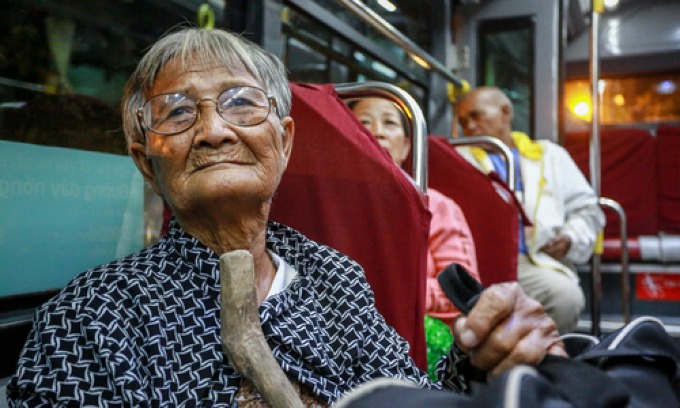Instead of moving westwards as forecast earlier, Usagi has changed course and is now heading south.
As of Friday morning the storm lay centered around 410 kilometers (254 miles) to the east of the region between Ninh Thuan and Ba Ria-Vung Tau provinces, and packed winds of up to 75 kilometers per hour. Ba Ria-Vung Tau, home to the popular beach town Vung Tau, lies next to HCMC.
Over the next 24 hours it will move west-southwest at 10-15 kilometers an hour and intensify, according to the National Center for Hydro-Meteorological Forecasting.
By Saturday morning the storm is expected to reach around 80 kilometers to the east of Phu Quy Island in the central province of Binh Thuan with winds of 100 kilometers.
Hoang Van Cuong, director of the forecasting center, said both Vietnamese and international weather stations have said there is a very high chance of the storm affecting southern and south central provinces as it makes landfall Saturday.
Central provinces from Thua Thien-Hue to Binh Thuan and the southern part of the Central Highlands are likely to be battered by rains of up to 500 millimeters while southern provinces can expect up to 200mm. Rainfall from 180mm a day is considered heavy.
Flood warnings have been issued for rivers from Quang Tri to Binh Thuan and in the Central Highlands, and landslides are also forecast along rivers.
Le Dinh Quyet of the Southern Hydrometeorological Center said the tropical storm accompanied by high tides would cause heavy flooding in Saigon and southern provinces.
Mass evacuations planned

People in Can Gio are evacuated during stormy days in 2017. Photo by VnExpress/Thanh Nguyen
HCMC authorities have issued a ban on fishing boats and ships from setting sail from 1 p.m. Friday.
Authorities in the coastal district of Can Gio are planning to evacuate 4,000 people to safe areas and stockpile daily necessities for them.
Around 270,000 students in the central province of Khanh Hoa, which is still recovering from Typhoon Toraji, have been allowed to stay home from Friday afternoon.
Khanh Hoa’s famous resort town of Nha Trang, which was badly hit by torrential rains and landslides triggered by Toraji last weekend and reported at least 19 deaths, is considering evacuating 280,000 people from vulnerable areas.
Weather forecasters in Vietnam have warned another four to six typhoons and tropical depressions could develop off the country's east coast from now until the end of the year. Half of them would make landfall in and batter Vietnam’s central region, they said.
Coffee, oil production under threat
Ongoing coffee harvest in the Central Highlands and offshore oil exploration are under threat from the tropical storm.
"(Usagi) will start hitting our operational oil and gas blocks off the central and southern coast and all units must keep vigilant as the storm develops," state oil giant PetroVietnam said in a statement on Friday, as cited by Reuters.
The Central Highlands, Vietnam's largest coffee growing area, is half way through its harvest season.
"We are concerned that the heavy rains triggered by the storm will disrupt the coffee harvest," Nguyen Viet Vinh, General Secretary of the Vietnam Coffee and Cocoa Association, told Reuters.
A record number of 16 tropical storms hit Vietnam last year, killing 389 people and injuring 668 others, mostly in the northern and central regions. The General Statistics Office estimated damage at around VND60 trillion ($2.64 billion), 1.5 times the previous year’s figure.
In the first 10 months of this year natural disasters left 185 people dead or missing and injured 134 others, and caused losses of more than VND8.8 trillion ($381 million).